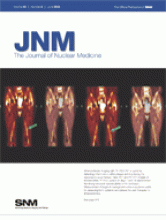TO THE EDITOR: The excellent review article by Luker and Luker (1) on the current and future directions is well done and presents most of the emerging optical imaging modalities—except skin cancer imaging.
Skin cancer is often the stepchild of cancer research and typically does not get the recognition it may deserve. Yet skin malignancies represent the highest number of new cancers reported every year, at over 1 million annually, based on estimations by the American Cancer Society (2). This number represents approximately 40% of all new cancers detected in the United States per year. However, most of these cancers are excluded from cancer statistics published by the American Cancer Society. Therefore, skin cancers, such as basal cell carcinoma and squamous cell carcinoma, are often ignored or overlooked in discussions of cancer research.
Skin cancer detection is one of the best applications of optical imaging. With recent imaging advancements, optical imaging for skin cancer diagnosis has become an indispensible clinical tool that is used by 22% of dermatologists in the United States (3). Indeed, molecular optical imaging of skin cancer is routinely used clinically for imaging fluorescence from basal cell carcinomas using δ-5-aminolaevulinic acid as a fluorescent probe (4). More recently, molecular optical imaging studies with a fluorescent analog of deoxyglucose (2-(N-(7-nitrobenz-2-oxa-1,3-diazol-4-yl)amino)-2-deoxyglucose) have demonstrated that such probes hold the promise of providing an optical analog of FDG for metabolism mapping of superficial skin cancer (5).
Skin cancer is a powerful application of optical imaging in medicine. Because most skin cancers are located superficially, applying optical imaging methods is not as daunting a problem as imaging deeper cancers, such as breast cancer. Further, optical imaging equipment does not have to be expensive to be medically useful. Devices such as the dermatoscope (6) and DermLite (3Gen, LLC) (7) are inexpensive and, in the case of DermLite devices, can be adapted to provide multispectral and fluorescence imaging capabilities. So, when reviewing optical imaging methods in medicine, one must also consider the important clinical role they play in the diagnosis of skin cancer and treatment follow-up. Unlike most of the applications described by Luker and Luker (1), optical imaging of skin cancer is already being used clinically and could help pave the way for molecular optical imaging in medicine.
Footnotes
-
COPYRIGHT © 2008 by the Society of Nuclear Medicine, Inc.







